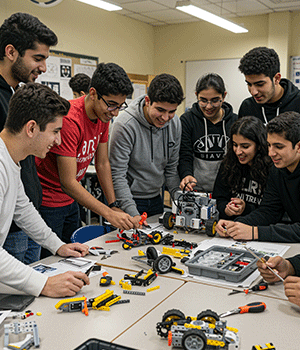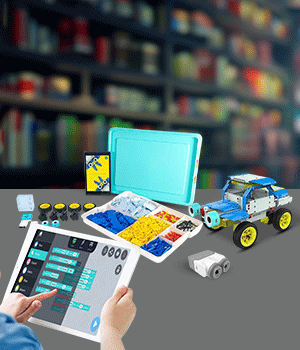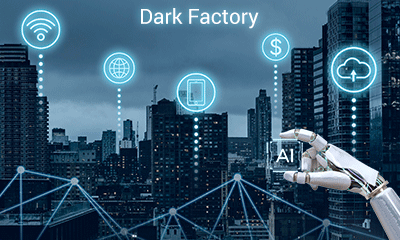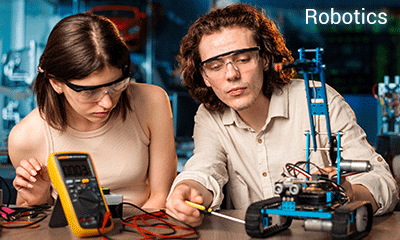

The Internet of Things (IoT)
Transforming the Way We Live and Work
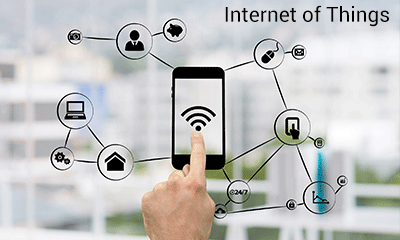
The Internet of Things (IoT) is one of the most transformative technologies of the 21st century. By connecting everyday devices to the internet, IoT is revolutionizing how we interact with the world around us. From smart homes and healthcare to industrial applications, IoT is making everything more efficient, connected, and intelligent. In this blog, we’ll explore what IoT is, how it works, and its impact on various industries, while highlighting popular IoT keywords and trends shaping its future.
What is IoT?
The Internet of Things (IoT) refers to the network of physical objects embedded with sensors, software, and other technologies that allow them to connect and exchange data over the Internet. These “smart” devices can range from household appliances like refrigerators and thermostats to industrial machinery and wearable devices. The power of IoT lies in its ability to collect and share data in real time, enabling smarter decisions, automation, and enhanced efficiency.
How Does IoT Work?
IoT devices rely on sensors to collect data and transmit it via the internet to centralized systems, which analyze and interpret the information. For example, a smart thermostat in your home collects data about your heating preferences and adjusts temperatures accordingly. This data is sent to the cloud, processed, and used to optimize your home’s energy consumption. IoT platforms also use data analytics and machine learning to improve decision-making and automation, making the entire system more intelligent over time.
The Key Benefits of IoT
Increased Efficiency: By connecting devices and automating processes, IoT helps reduce manual intervention, saving time and resources while improving productivity.
Improved Data Insights: IoT devices generate massive amounts of data, which can be analyzed to uncover patterns, improve decision-making, and optimize operations.
Enhanced Convenience: IoT allows devices to communicate and work together, making our lives more convenient. For example, smart home systems let you control lighting, security, and appliances from your smartphone.
Cost Reduction: IoT helps reduce operational costs by improving energy efficiency, preventing maintenance issues through predictive analytics, and automating tasks that would otherwise require human labor.
Better Customer Experience: In industries like retail, IoT can enhance the customer experience by personalizing services based on data from connected devices, like smart kiosks and wearables.
Applications of IoT in Different Industries
Smart Homes : One of the most popular applications of IoT is in the smart home industry. Devices like smart thermostats, smart lighting, and security cameras are all connected to the internet, allowing users to control them remotely through their smartphones or voice assistants. This not only makes homes more energy-efficient but also enhances security and convenience for homeowners.
Healthcare (IoT in Healthcare) : The integration of IoT in healthcare, known as healthcare IoT, is revolutionizing patient care. Wearable devices like fitness trackers, fitness rings, and smartwatches monitor vital signs, such as heart rate and blood pressure, sending data directly to healthcare providers for real-time monitoring. Remote patient monitoring (RPM) and telemedicine are also benefiting from IoT, as doctors can access patient data from anywhere, improving healthcare outcomes.
Industrial IoT (IIoT) : Industrial IoT (IIoT) enhances automation, supply chain management, and predictive maintenance in the manufacturing and industrial sectors. Sensors embedded in machinery can monitor equipment performance, predict failures, and schedule maintenance before a breakdown occurs. This reduces downtime, improves safety, and increases productivity. IoT also allows for real-time inventory tracking and resource management, streamlining operations.
Smart Cities : IoT is also transforming urban living with the rise of smart cities. IoT applications in smart cities include smart traffic management systems, waste management, and energy-efficient streetlights. Sensors embedded in infrastructure provide valuable data that cities can use to improve services, reduce energy consumption, and ensure sustainability.
Retail and Logistics : In the retail and logistics industries, IoT is changing how businesses manage inventory, deliver products, and engage with customers. Smart shelves, equipped with IoT sensors, automatically track inventory levels, sending notifications when stocks are low. In logistics, IoT-enabled fleet management systems help companies monitor the location and condition of goods in transit, improving supply chain efficiency.
The Future of IoT: Trends and Innovations
- 5G and IoT : With the rollout of 5G networks, IoT devices will become even more powerful. 5G provides faster data transmission speeds, lower latency, and greater connectivity, enabling IoT devices to communicate in real time and handle more data at once. This will unlock new possibilities, such as autonomous vehicles and real-time health monitoring on a larger scale.
-
Edge Computing and IoT : As IoT devices generate massive
amounts of data, the need for edge computing is becoming
more apparent. Edge computing allows data to be processed
closer to the source (i.e., on the device itself or local
servers) instead of relying entirely on cloud computing.
This reduces latency, speeds up decision-making, and
decreases the risk of network congestion, especially in
critical applications like autonomous vehicles and
industrial monitoring.
-
AI and IoT Integration : Combining AI with IoT is leading
to the development of smart devices that not only collect
and share data but also learn from it to make intelligent
decisions. AI-powered IoT systems can automatically
optimize operations, detect anomalies, and provide
predictive insights. For instance, AI-integrated IoT
systems in factories can analyze production data to
predict equipment failures or improve manufacturing
processes.
-
Security and Privacy : As IoT becomes more widespread,
security and privacy concerns are growing. With billions
of connected devices generating and transmitting sensitive
data, protecting this information becomes paramount. The
future of IoT will need to address vulnerabilities and
ensure secure communication between devices, networks, and
cloud systems. Blockchain technology is also expected to
play a role in securing IoT devices and data.
Conclusion
The Internet of Things (IoT) is no longer a futuristic concept – it is transforming industries and improving lives today. From smart homes and healthcare to industrial automation and smart cities, IoT is creating a more connected, efficient, and intelligent world. As the technology continues to evolve, the future of IoT will be shaped by innovations in 5G, AI, and edge computing, bringing even more opportunities for businesses and consumers alike.
As IoT technology continues to grow, adopting it will be essential for staying competitive in the ever-evolving digital landscape. Whether you are a business leader, tech enthusiast, or consumer, understanding the potential of IoT is key to embracing the future of innovation.
